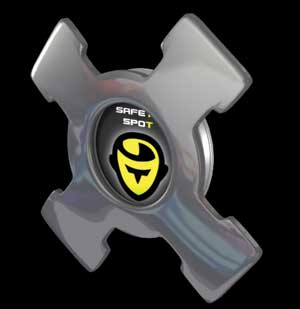BY NORM FENTON
Each year, the public, sadly, becomes aware of employees or athletes who have suffered some form of heat-related illness. Heat-related illnesses include heat cramps, heat exhaustion, and heat stroke—medical emergencies that, in the absence of prompt intervention, can lead to loss of consciousness or more permanent serious medical conditions such as neurologic, cardiac, renal, gastrointestinal, hematologic, or muscle dysfunction and, subsequently, death.
 |
| (1) Photo courtesy of Sport and Industry Safety Devices, LLC. |
According to the Bureau of Labor Statistics Census of Fatal Occupational Injuries data, 230 heat-related deaths have occurred from 2003-2009. Over that same time period, there have been 15,370 heat-related injuries/illnesses that required days away from work. The National Center for Catastrophic Sport Injury Research reported there were 127 deaths from heat stroke in football from 1960 to 2009. Since 1995, 46 football players (35 high school, eight college, two professional, and one sandlot) died of heat stroke. However, these figures probably should be higher, as these types of injuries are underreported.
The United States Fire Administration (USFA) noted in 2005 that there were 3,550 reported injuries from thermal stress. That figure was generally acknowledged as being low with respect to federal database reporting (USFA, 2006). Many believe that the disproportionate number of sudden cardiac events in first responders is caused by dehydration, which increases inner-core temperature. Subsequently, plasma volume is reduced, which in turn increases platelet formation and elevates the possibility of the formation of blood clots, which can initiate a cardiac event.
The Safety Spot monitors skin/internal core temperatures of employees and athletes in their work and activity environments. The data this device provides will remove the subjective determination of internal heat exposure in all personnel and replace it with the first quantitative analysis of inner core temperature among employees and athletes. The device is small (the size of a U.S. quarter) and can be secured in a helmet with skin contact above the eyebrow or affixed on the neck behind and below the ear with an adhesive device called the “X-band.”
This new safety item affords the worker an early warning mechanism to prevent heat-related illness. It is an effective device that can eliminate many of the medical issues associated with worker and athlete and exposure to occupational and environmental heat. Prior to this calendar year, the device was marketed exclusively to the U.S. Department of Defense and the U.S. Department of Energy.
The Safety Spot personal monitoring sensor uses multiple patent-pending technologies that estimate core body temperature from one of two locations: the carotid artery just below the ear or the temporal artery region across the temple to just above the eyebrow. If the user’s estimated core temperature rises above 103°F for more than 45 seconds, the sensor will activate, transmitting an audible beep and flashing red LED for 30 seconds until the user’s estimated core temperature returns below the alarm threshold.
A very high volume of heat-related health incidents occur within the firefighter and first responder community. Part of the beta development and refinement of the device used active personnel from a county fire department in the state of Georgia. This department and our developers believe this product is the most effective and least obtrusive device to monitor individual inner core temperatures of vocational workers including firefighters and first responders. Following their beta test results, it was determined that the most effective positioning of the device was the neck area, which provided an uninterrupted source of monitoring.
The device can be secured at the beginning of a shift and removed at the end of the shift. It is water resistant (although it should not be worn underwater). The X-band is designed to allow personnel access to the device’s “On” button to ensure that it is monitoring. It is secured in a manner similar to an electrocardiography monitor. The adhesive material is medical grade and will last the entire shift. The device is sold with one nonreusable adhesive pad. When ordering, the purchaser should budget the number of anticipated personnel and shifts associated with the use of the device.
| Disclaimer: The Safety Spot™ is not a medical device or designed for use in any medical or patient-monitoring application. The Safety Spot™ is intended to act as an early warning of possible heat-related illness. If you experience any of the warning signs of heat exhaustion, immediately suspend physical activity. Heat exhaustion is a milder form of heat-related illness that can develop after exposure to high temperatures and inadequate or unbalanced replacement of fluids. Those most prone to heat exhaustion are elderly people, people with high blood pressure, and people working or exercising in a hot environment. |
● NORM FENTON is the managing partner of Sport and Industry Safety Devices, LLC.
Fire Engineering Archives

